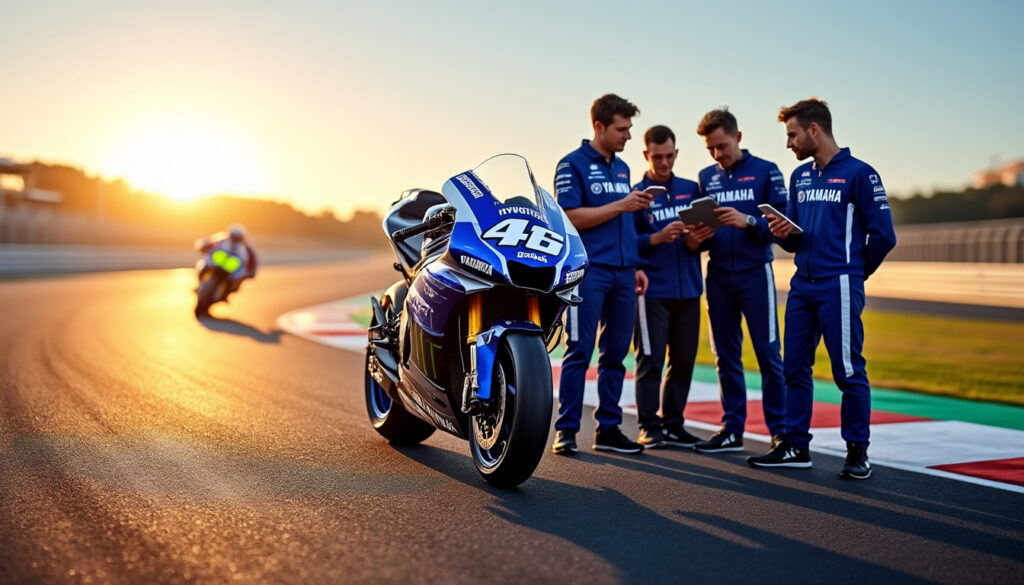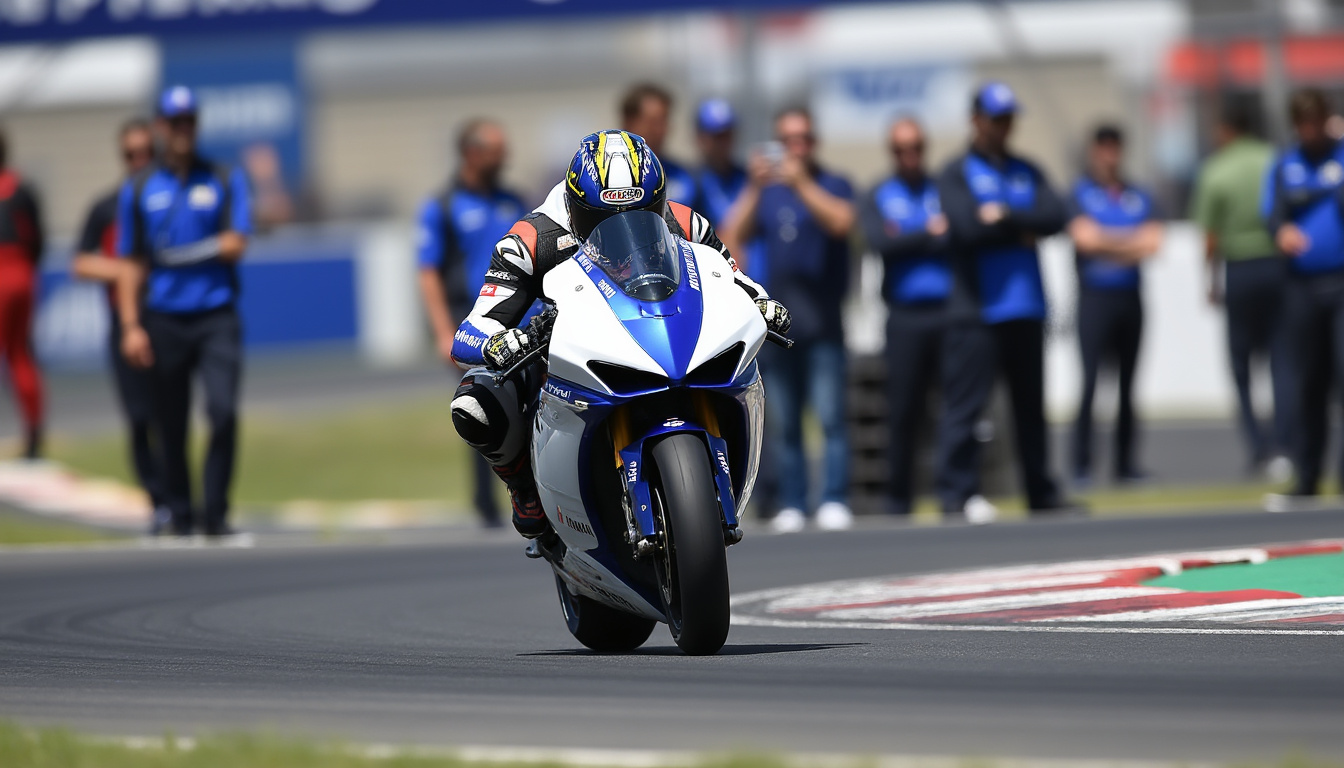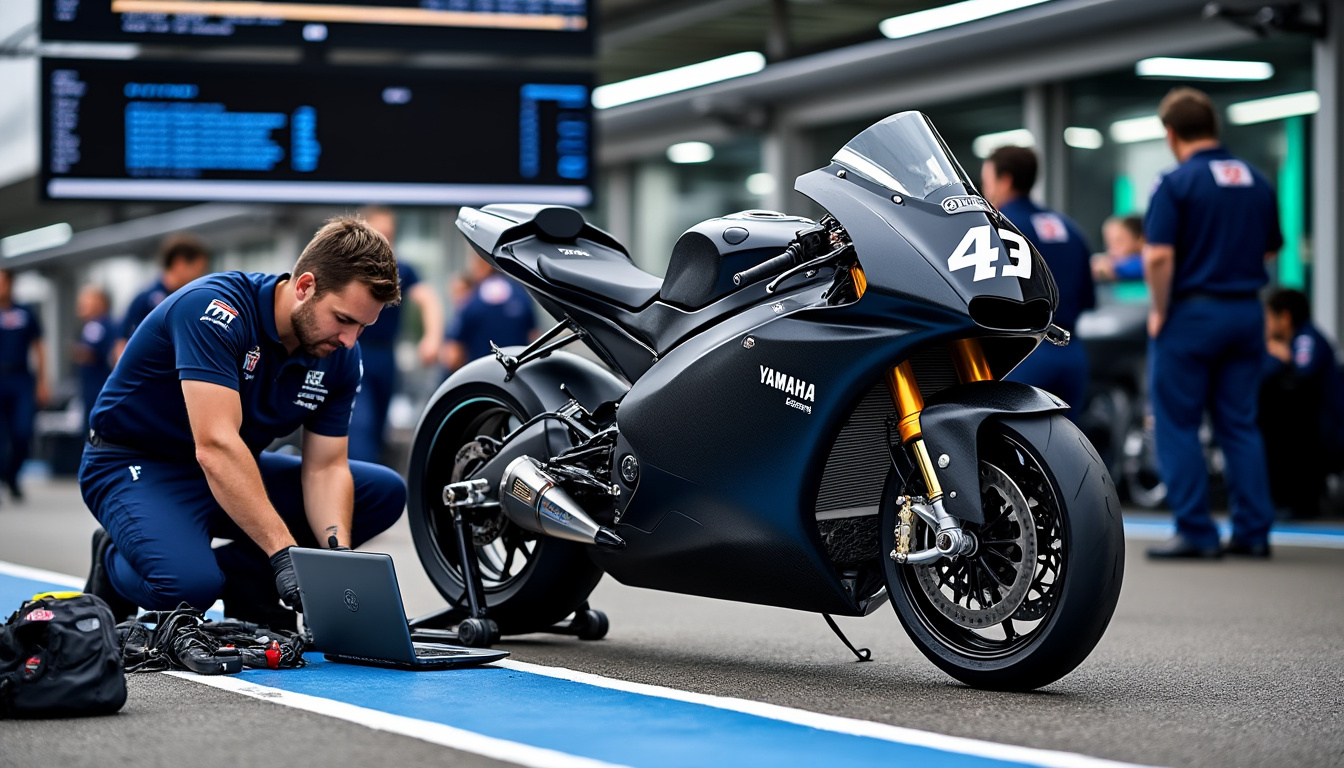Yamaha launches track testing of its new V4 engine in MotoGP

The world of MotoGP is preparing for a shake-up with Yamaha's announcement regarding its on-track testing of an all-new V4 engine. This initiative marks a strategic turning point for the iconic Japanese brand, which must rise to the challenge of increasingly fierce competition. While other manufacturers like Ducati, Honda, and Kawasaki have already made the leap to this type of engine, Yamaha's transition is crucial to reclaim its spot on the podium. Initial tests are already underway, promising a 2025 season full of twists and turns.
The debut of Yamaha's V4 engine in MotoGP
Yamaha has officially begun testing its V4 engine during a session in Valencia, allowing the brand to measure itself against other teams on the grid. Test rider Cal Crutchlow is the first to try out this new machine, before the main riders, Fabio Quartararo and Álex Rins, take over in later development phases. By opting for a V4 engine, Yamaha is aligning itself with a trend that most of the big names in MotoGP, including Ducati and Honda, have already adopted.

The importance of a V4 engine architecture
Switching to a V4 engine presents several advantages that can have a decisive impact on race performance. First, a V4 engine is often more compact, allowing for better aerodynamic design options. This results in a lower center of gravity, a crucial factor for the bike's maneuverability in turns. Additionally, this type of engine allows for more efficient power distribution, essential for competing against established brands like Kawasaki and Aprilia.
- Aerodynamic flexibility: The compact design of the V4 optimizes airflow around the motorcycle.
- Power management: A more even power distribution improves traction control.
- Weight reduction: A lighter engine can contribute to the overall performance improvement of the motorcycle.
Yamaha's development objectives
Massimo Bartolini, Technical Director at Yamaha, has clearly stated that the priority remains to ensure that the performance of the new V4 engine surpasses that of the current inline 4-cylinder engine. This process requires progressive development to ensure that each improvement is measured and compared. This is why on-track testing is a crucial step, allowing engineers to gather precise data.
| Element | Current 4-cylinder engine | New V4 engine |
|---|---|---|
| Size | Larger | More compact |
| Power distribution | Even | Optimized |
| Weight | Heavier | Lighter |
Based on the test results, the decision to adopt or not the V4 engine for future Grands Prix will be made. This comes down to evaluating whether this new engine can truly make a difference on the track.
The challenges faced by Yamaha in MotoGP
Despite the promising potential of its V4 engine, Yamaha faces several challenges. First, the manufacturer must navigate a competitive environment where brands like Ducati and Honda have a well-established mastery. These brands have consistently dominated MotoGP thanks to often superior performance and advanced technology. Indeed, Ducati has often been cited as the benchmark in terms of innovations in engines and chassis.
Competitor analysis
A determining factor will be the ability to analyze performance, not only from Yamaha but also from its competitors. With particular attention paid to the machines of Ducati and Honda, Yamaha must learn and adapt. This involves monitoring their innovations, as well as taking into account feedback from riders on the ground.
- Ducati: Known for its powerful engine and a well-established experience in MotoGP.
- Honda: Its reputation is based on cutting-edge technology and proven stability on different tracks.
- Kawasaki: Stands out for its innovation strategy, while Aprilia also attracts attention with its increasing performance.
As a result, Yamaha must double its efforts to ensure that its new V4 engine can compete on these fronts. Developing this engine is not simply a matter of power, but also of reliability, agility, and aerodynamic configuration.
Technological and mechanical innovations on the horizon
As part of this project, Yamaha aims not only to develop a high-performing engine but also to integrate other technological advancements. This change offers a unique opportunity to revisit the overall design of the motorcycle. New innovations such as advanced electronic systems and improvements in brakes and suspension are on the way to maximize the motorcycle's overall performance starting from the 2025 season.

Technology and electronics
The integration of modern electronic systems can significantly improve the motorcycle's performance on the track. This includes devices such as advanced ABS, traction control, and even driving assistance systems that can optimize each rider's performance based on track conditions. For example, real-time data communication between the motorcycle and the technical team is essential for strategic adjustments during races.
| Innovation | Functionality |
|---|---|
| Advanced ABS system | Improves safety and power management. |
| Traction control | Optimizes power on slippery roads. |
| Communication system | Facilitates real-time adjustments during the race. |
These technological advancements illustrate Yamaha's ambition to remain at the forefront of innovation, ensuring that its riders have the best possible tools to shine on the world stage.
The development timeline and future expectations
Yamaha's tests are representative of a long-term strategy. The team plans to continue testing throughout the year, while regular updates on the motorcycle's performance will be carried out. If the V4 engine development progresses as expected, it is anticipated that it could make its competitive debut as early as the start of the 2025 season.
Expectations for the 2025 season
Expectations for the 2025 season are high. Yamaha's main goal is to return to podium positions and regain the confidence of its fan base. For this, clear communication between riders, engineers, and management will be essential. This includes not only sharing data but also direct feedback on the motorcycle's performance.
- Rider feedback: Listening to feedback on the motorcycle's behavior allows for fine-tuning development.
- Key events: Participation in additional international tests for a comprehensive assessment.
- Communication strategies: Establishing proactive dialogue between the technical team and the riders.
Through these advancements, Yamaha hopes to regain its standing among the leaders of MotoGP while adapting to increasingly fierce competition in the world of high-performance motorcycles.
Source: www.autohebdo.fr
Leave a Reply



Articles relatifs